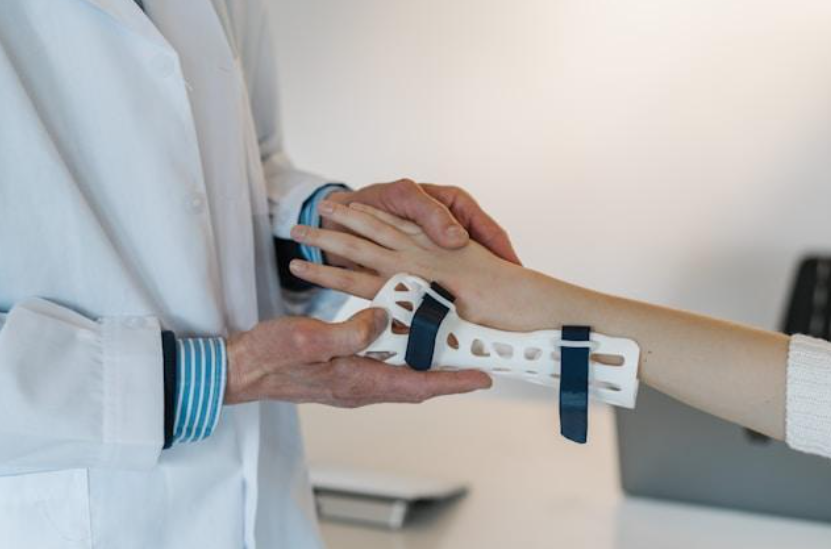A COMPREHENSIVE GUIDE ON FOOT & ANKLE RECONSTRUCTION SURGERY
A Comprehensive Guide on Foot and Ankle Reconstruction Surgery

Injuries that have not healed properly after three to six months, arthritis, or chronic ankle instability are all treated with ankle reconstruction surgery. Foot and ankle reconstruction surgery is crucial in restoring mobility, alleviating pain, and enhancing the overall quality of life for individuals facing complex musculoskeletal issues.
Continue reading as we explore the various aspects of foot and ankle reconstruction surgery, shedding light on its procedures, benefits, and postoperative care.
Who Needs Foot and Ankle Reconstruction Surgery?
Foot and ankle reconstruction surgery may be necessary for various reasons, often related to chronic conditions, injuries, or degenerative disorders.
Here are some specific situations where someone needs foot and ankle reconstruction surgery:
Chronic Ankle Instability
Has your ankle been sprained multiple times and not healed properly? Then, you may develop chronic ankle instability. Ligaments that are stretched or torn may not provide adequate support, leading to recurrent instability. Some people naturally have loose ligaments, making them more prone to ankle instability. Wear and tear over time or injury could make this condition worse.
Ankle Arthritis
Ankle arthritis may be due to:
Degenerative Joint Disease:
Arthritis in the ankle can result from wear and tear on the joint over time. Osteoarthritis is a common form of arthritis that can cause pain, swelling, and decreased joint function.
Inflammatory Arthritis: Conditions like rheumatoid arthritis can affect the joints, including the ankle, leading to inflammation, pain, and joint damage.
Ankle Injuries
Ankle injuries may be due to:
Fractures:
Severe ankle fractures, especially those involving joint surfaces, may require surgical intervention for proper alignment and stability.
Tendon Tears: Tears or ruptures of tendons around the ankle, such as the Achilles tendon, may require surgical repair to restore function and prevent long-term complications.
Soft Tissue Injuries: Damage to ligaments, cartilage, and other soft tissues around the ankle may require surgical intervention for optimal healing and stability.
Deformities
Deformities are of two types:
Congenital Deformities:
Some individuals are born with foot and
ankle deformities that can affect their gait and overall mobility. Surgical reconstruction corrects these deformities.
Acquired Deformities:
Conditions like flat feet or high arches can contribute to foot and ankle problems, and surgical correction may improve function and alleviate pain.
Failed Previous Surgeries
In some cases, individuals may have undergone previous foot or ankle surgeries that were not successful or did not address the underlying issue. Reconstruction surgery may be necessary to correct the problems and improve outcomes.
What Happens during the Surgery?
If you need surgery, here are the steps:
Anesthesia
Anesthesia is given to you before the procedure starts to ensure you are comfortable and pain-free throughout the surgery. The type of anesthesia used can vary, including general or regional anesthesia, depending on the specific surgical approach and the patient's medical condition.
Incision
Once you are under anesthesia, the surgeon makes an incision over the affected area. The incision's location and size depend on the nature of the ankle condition. The goal is to provide the surgeon access to the damaged structures while minimizing the impact on surrounding healthy tissue.
Repair or Removal of Damaged Tissue
The surgeon identifies and addresses the damaged or diseased tissues. This may involve repairing torn ligaments, tendons, or cartilage. In cases of arthritis, the surgeon may smoothen or remove damaged joint surfaces to alleviate pain and improve joint function.
Bone Reshaping
The surgeon may perform bone reshaping or osteotomy if there are deformities or irregularities in the bones contributing to the ankle problem. This involves carefully cutting and repositioning the bone to correct alignment and restore proper joint function.
Fusion
This involves the intentional immobilization of the joint by permanently joining the bones. When other treatments are ineffective for treating conditions like severe arthritis or specific types of fractures, surgeons often recommend fusion. The goal is to eliminate pain by eliminating movement at the affected joint.
Ankle Replacement
A procedure designed to alleviate chronic pain and restore mobility. During the surgery, damaged parts of the ankle joint are carefully removed and replaced with artificial implants, enabling smoother movement.
Closure
The next step is the closure of your incision using stitches or other techniques. A sterile dressing is applied to the wound to promote healing and reduce infection risk.
Postoperative Care
After the surgery, they will monitor you in a recovery area as you wake up from anesthesia. Sometimes, you may need to use crutches, a cast, or a brace to protect the surgical site and aid in healing.
Preparing for the Surgery
Schedule a preoperative consultation with your healthcare team to discuss the surgery, address concerns, and review your medical history. Follow any specific instructions provided, including guidelines on fasting and medication management.
Complete any recommended medical evaluations or tests, and maintain a healthy diet to support your body's healing process. If you smoke,
consider quitting before surgery to reduce complications. Plan for transportation and support, arranging for someone to accompany you on the day of surgery and assist with your recovery at home. Prepare your living space for a comfortable return after surgery, and communicate any changes in your health to your surgeon.
Engage in activities that manage stress and anxiety and follow preoperative restrictions to minimize risks. Remember that these steps are general guidelines, and your surgeon will provide tailored instructions based on your health and the specific type of surgery you are undergoing. Open communication with your healthcare team is essential for a successful surgery and recovery.
What Happens during Recovery?
Recovery after foot and ankle reconstruction surgery typically involves a phased approach, beginning with a period of immobilization to allow the surgical site to heal. You may be required to use crutches, wear a cast, or utilize a brace during this initial phase. Following immobilization, physical therapy becomes a crucial component of the recovery process.
Physical therapists work with you to restore joint mobility, strengthen muscles, and improve overall function. Rehabilitation efforts focus on gradually reintroducing weight-bearing activities and promoting a return to normal activities of daily living.
AZ Ortho has a team of orthopedic specialists who employ personalized treatment plans to address foot and ankle conditions, ensuring optimal recovery and improved mobility. With a commitment to patient-centric solutions, we provide a wide range of services, including surgical interventions, non-surgical treatments, and rehabilitative care.
Contact us for more information.










